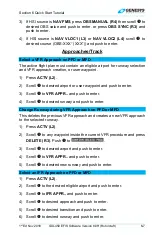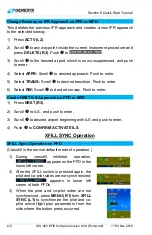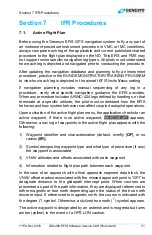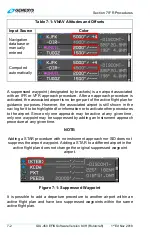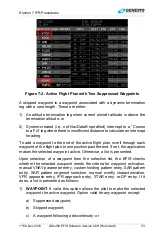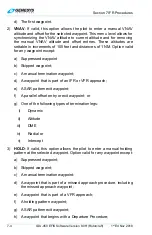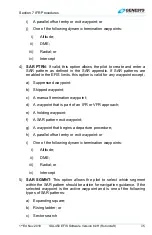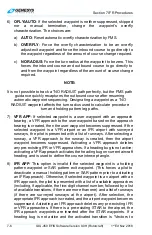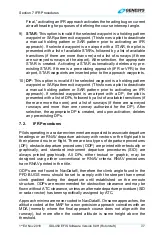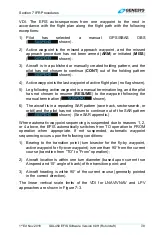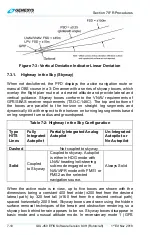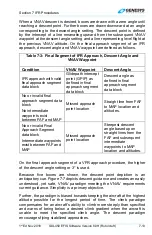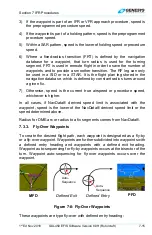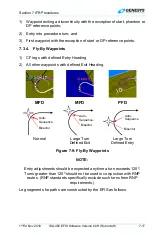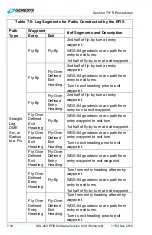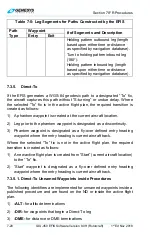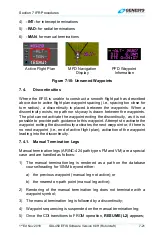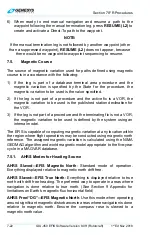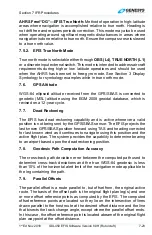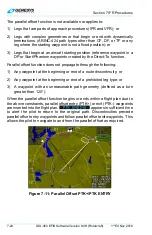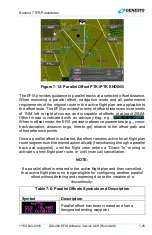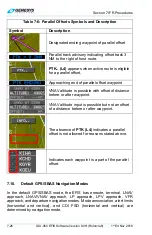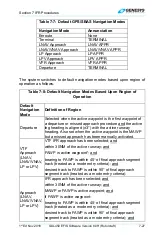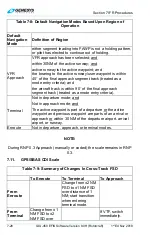
Section 7 IFR Procedures
1
st
Ed Nov 2018
IDU-450 EFIS Software Version 8.0H (Rotorcraft)
7-13
When a VNAV descent is desired, boxes are drawn with a zero angle until
reaching a descent point. Further boxes are drawn downward at an angle
corresponding to the descent angle setting. The descent point is defined
by the intercept of a line emanating upward from the subsequent VNAV
waypoint at the descent angle setting and a line representing level flight at
the previous VNAV altitude. On the final approach segment of an IFR
approach, descent angle and VNAV waypoint are defined as follows.
Table 7-3: Final Segment of IFR Approach, Descent Angle and
VNAV Waypoint
Condition
VNAV Waypoint
Descent Angle
IFR approach with valid
final approach segment
data block
Glidepath intercept
point (GPIP) as
defined in final
approach segment
data block
Descent angle as
defined in final
approach segment
data block
No or invalid final
approach segment data
block
No intermediate
waypoints exist
between FAF and MAP
Missed approach
point location
Straight line from FAF
to MAP location and
altitudes.
No or invalid Final
Approach Segment
data block
Intermediate waypoints
exist between FAF and
MAP
Missed approach
point location
Steepest descent
angle based upon
straight lines from the
FAF and subsequent
intermediate
waypoints to MAP
location and altitudes.
On the final approach segment of a VFR approach procedure, the higher
of the descent angle setting or 3° is used.
Because five boxes are shown, the descent point depiction is an
anticipatory cue. Figure 7-7 depicts descent guidance and creates an easily
understood, yet safe, VNAV paradigm meeting the VNAV requirements
current guidance. Simplicity is a primary objective.
Further, the paradigm is biased towards keeping the aircraft at the highest
altitude possible for the longest period of time. The climb paradigm
compensates for an aircraft's ability to climb more steeply than specified
and warns of being below a desired climb gradient when the aircraft is
unable to meet the specified climb angle. The descent paradigm
encourages flying stabilized approaches.

